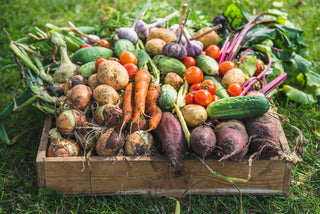An aquaponic system is a type of hydroponic system that combines aquaculture (raising fish) and hydroponics (growing plants without soil) in a symbiotic relationship. Here's how an aquaponic system grows vegetables:
-
The fish are raised in a tank: The system starts with a tank where fish are raised. The fish produce waste in the form of ammonia, which can be harmful to them if it builds up in the water.
-
Bacteria convert the ammonia into nitrates: Bacteria in the system convert the ammonia into nitrites and then nitrates, which are less harmful to the fish.
-
The nutrient-rich water is circulated to the plant bed: The water containing the nitrates is circulated to a plant bed, where the plants are grown in a soilless medium such as gravel, clay pellets or coconut coir. The plants absorb the nitrates as nutrients, which helps them grow.
-
The plants filter the water: As the water passes through the plant bed, the plants remove the nitrates and other nutrients, filtering the water and making it safe for the fish.
-
The clean water is returned to the fish tank: After passing through the plant bed, the clean water is returned to the fish tank, completing the cycle.
This symbiotic relationship allows both the fish and plants to thrive in a closed-loop system. The fish provide nutrients for the plants, and the plants clean the water for the fish. As a result, aquaponic systems are an efficient and sustainable way to grow vegetables.



